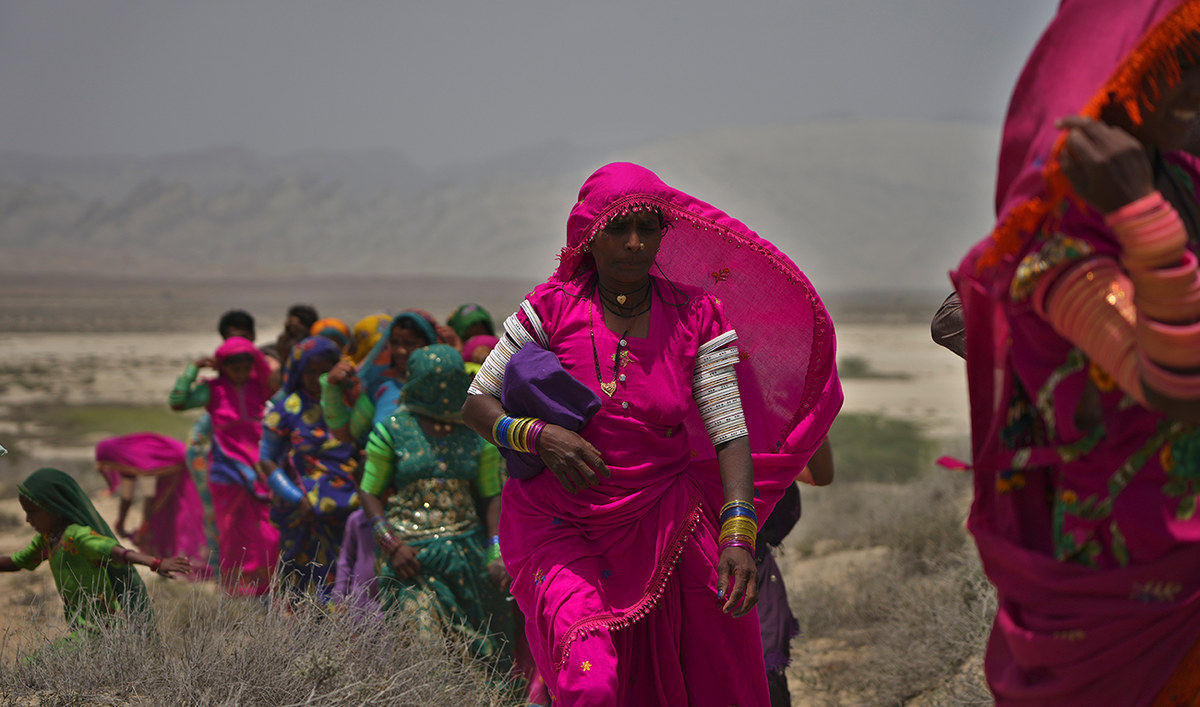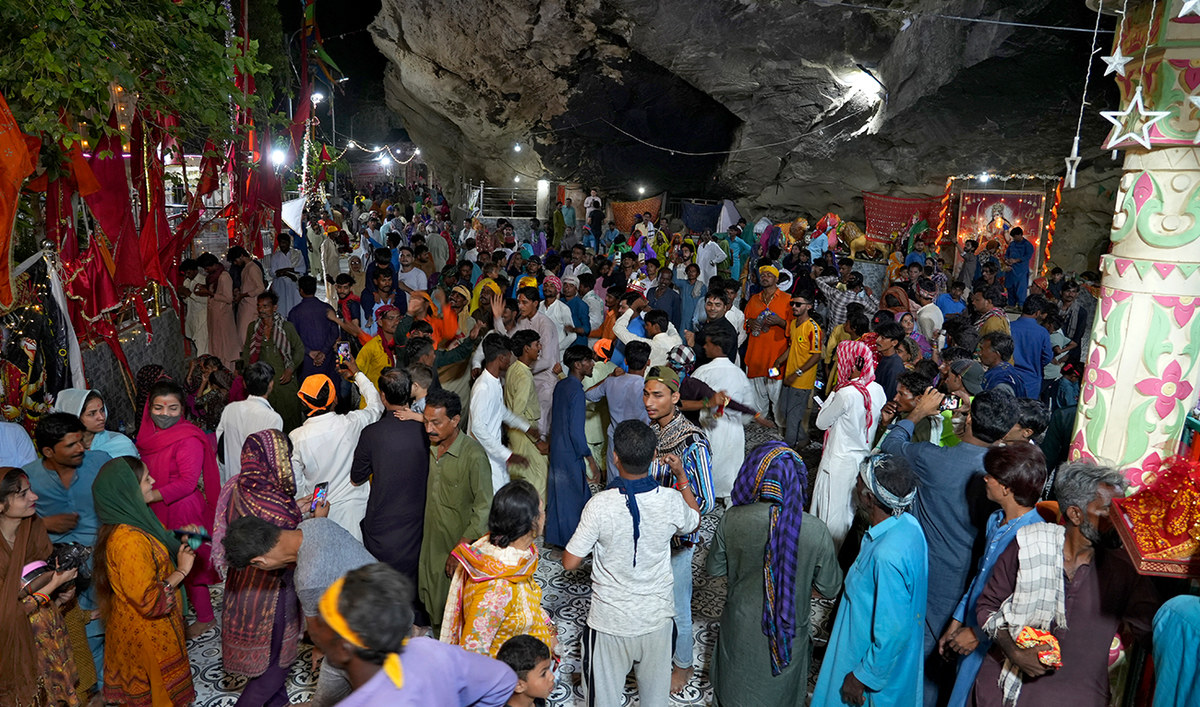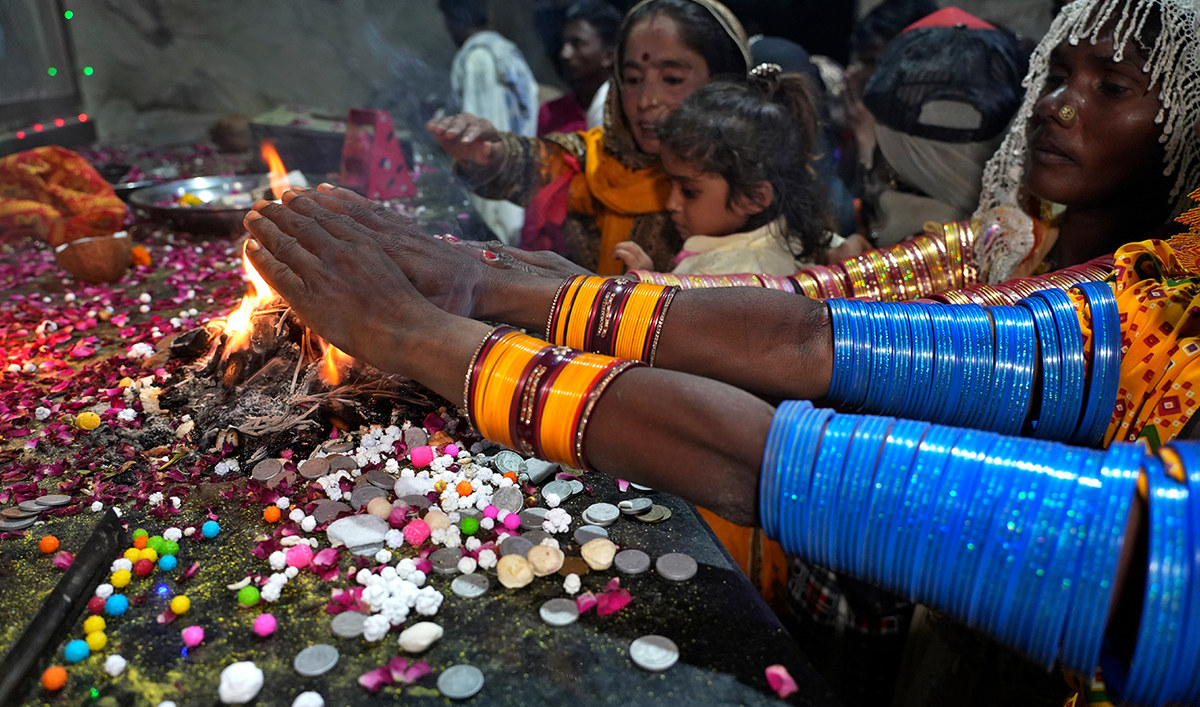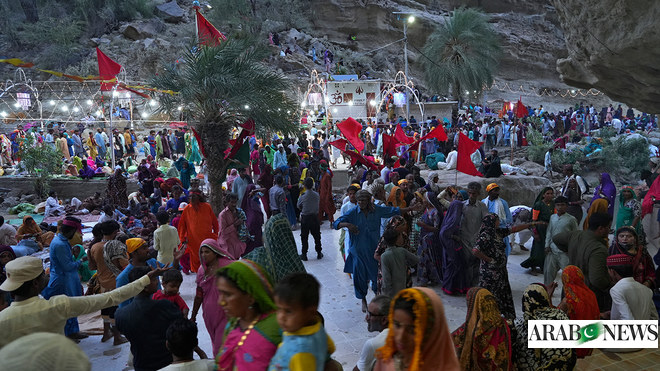Hingraj, Pakistan: In southwestern Pakistan, the climb of a steep mud volcano marks the beginning of a religious ritual for Hindu pilgrims.
They climbed hundreds of steps and clambered over rocks to reach the top, throwing coconuts and rose petals into a shallow crater as they visited the ancient cave temple Hingraj Mata, the center of three days of worship. Ask God’s permission to do so.
The dramatic setting of Hingol National Park in Baluchistan province is the setting for Pakistan’s largest Hindu festival, Hingraj Yatra, which begins on Friday and ends on Sunday. Organizers say more than 100,000 Hindus are expected to participate.
Muslim-majority Pakistan is home to 4.4 million Hindus, just 2.14 percent of the population. Hingrajmata is one of the few sacred Hindu sites that continues to attract large numbers of pilgrims from all over the country every year.
Muslims and Hindus generally live peacefully in Pakistan, and when the country was partitioned by British colonialists in 1947, the majority of Hindus immigrated there. But relations between the rivals remain strained, leading to attacks on Hindu temples in recent years.

Hindus believe that Hingraj Mata is one of the places where Sati, the goddess of marital harmony and longevity, fell to earth after her life ended.
Maharaj Gopal, the temple’s most senior priest, explains why people flock to the temple.
“This is the holiest pilgrimage in the Hindu religion,” Gopal said. “Whoever comes to the temple during these three days and worships accordingly will have all his sins forgiven.”
Journeys begin hundreds of kilometers away, most from neighboring Sindh province. Hundreds of packed buses departed from cities such as Hyderabad and Karachi and traveled along the Makran Coastal Road, which runs through southern and southwest Pakistan.

However, due to poor parking and vehicle access to the holy site, many pilgrims disembark and walk across dry, rocky terrain to complete their journey, sometimes barefoot and carrying children and luggage.
It is a few kilometers from the main road to the mud volcano and from there it is about 45 kilometers to Hingraj Mata.
The wind whips through the desert-like environment, kicking up dust that hits your eyes, nose, and mouth. The pilgrims’ festive mood and brightly colored clothing contrast with the arid landscape. Strong gusts of wind distort people’s celebratory cries of ‘Jai Mata Di’ and ‘Jai Shiv Shankar’.
Kanwal Kumar, 28, visited the temple for the first time with her husband. “We’ve been married for six years, but we haven’t had a child yet, so I’m hoping for the goddess’s help,” she said. “We believe that no one goes home empty-handed. All wishes will be fulfilled by Hingraj Mata.”
Hindu festivals bring life to Pakistan’s parks. There are hundreds of stalls selling snacks, drinks, jewelry and clothing. Vats containing hot food are cooked outdoors or in thatched huts. Pilgrims buy coconuts, sugar candy, flowers, and incense as ritual offerings.
Aloo Kumar, 55, wanted to express his gratitude to Lord Shiva, one of the three most important gods of Hinduism. “He gave our family a grandchild,” Kumar said, gesturing to the boy cradling his baby brother next to him. “We prayed for the birth of a grandchild during last year’s festival.”

Hingraj Mata is active even after dark. The shrine is decorated with fairy lights and other decorations, and pilgrims jockey for position in front of the shrine, sometimes holding babies in their arms to receive the blessings of the gods. Stewards have paid their respects and encouraged them to move on.
The park’s Hingol River, like the Ganges River in India, provides an opportunity for ritual bathing for Hindu pilgrims.
Although Hindu worship is not prohibited in Pakistan, openly practicing Hinduism is not common due to the severance of ties between India and Pakistan. After fighting three wars, expanding their military, and arming themselves with nuclear weapons, their interactions are filled with hostility and suspicion.
Travel restrictions and a hostile bureaucracy largely prevent people from crossing borders for leisure, study or work, but make exceptions for religious pilgrimages, usually for Sikhs in India. Sometimes.
Decades of political hostility pose challenges for the minority Hindu community, as many people in Pakistan identify Hindus with India. In India, the opposite exists, with Muslims complaining of discrimination.
Varsimal Divani, general secretary of Hingraj Mata, lamented that only Hindus are allowed to participate in the festival in Pakistan.
“We can visit this temple in our beloved country whenever our hearts desire,” Divani said. “But this is not the case for other Hindus in the world. I would like the Pakistani government to issue visas to them so that they can come here and receive blessings. It’s better connected and it’s better for the economy.”

